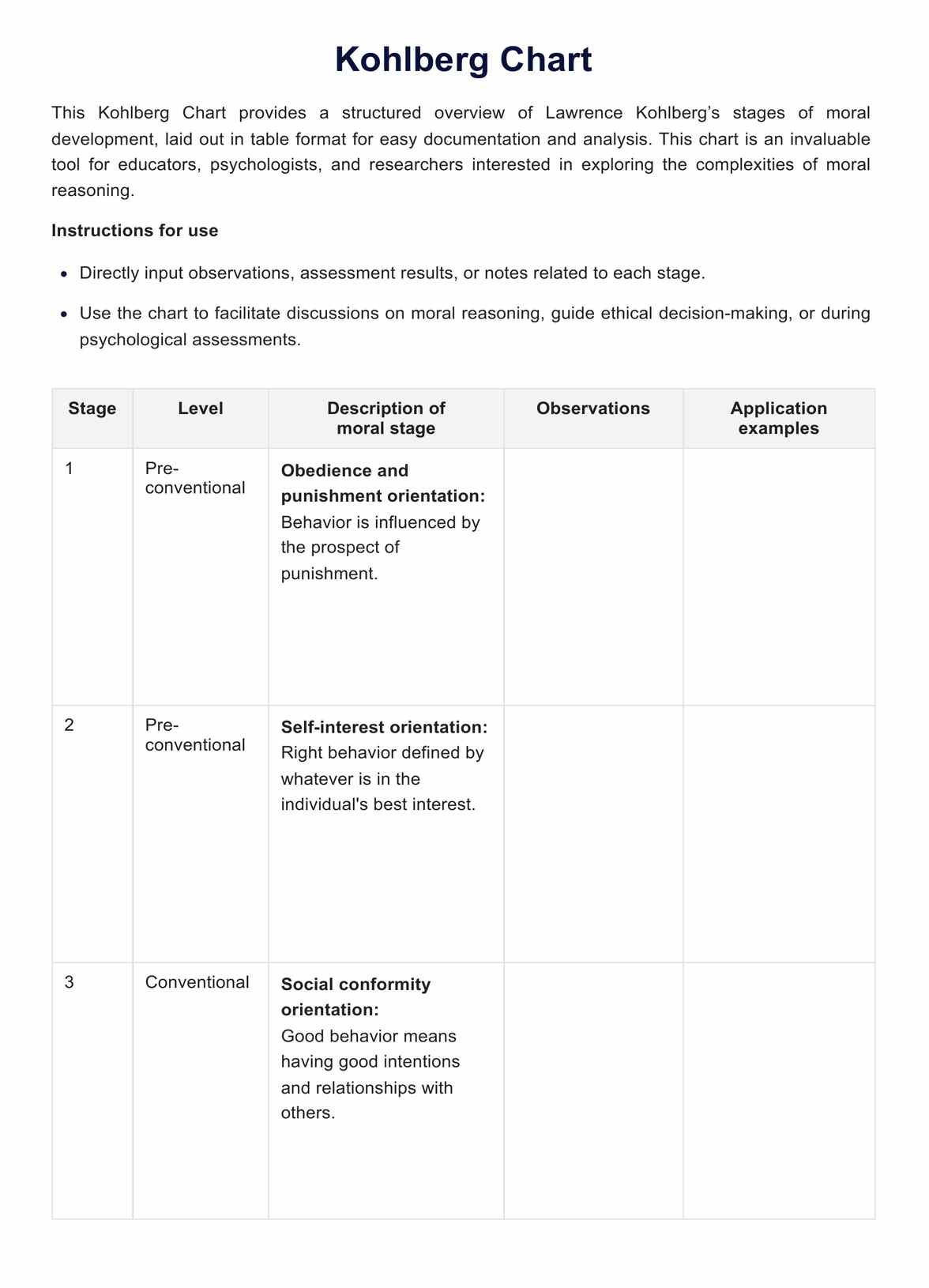Understanding these stages of moral judgment can help individuals recognize their moral reasoning and improve their decision-making in complex moral situations.

Kohlberg Chart
Explore Kohlberg's theory of moral development through our detailed Kohlberg Chart. Understand the stages and download our free Kohlberg Chart template.
Use Template
Kohlberg Chart Template
Commonly asked questions
Critics argue that Kohlberg's theory overemphasizes justice and doesn't account for other values like compassion, caring, and interpersonal relationships in moral reasoning.
Not everyone reaches the post-conventional level; it requires cognitive development, maturity, and exposure to various viewpoints and values.
EHR and practice management software
Get started for free
*No credit card required
Free
$0/usd
Unlimited clients
Telehealth
1GB of storage
Client portal text
Automated billing and online payments











